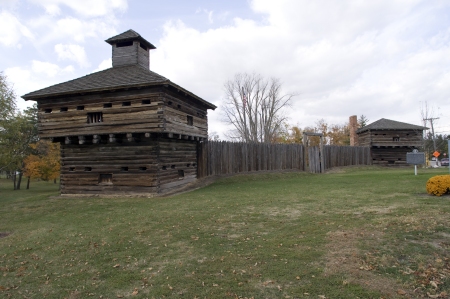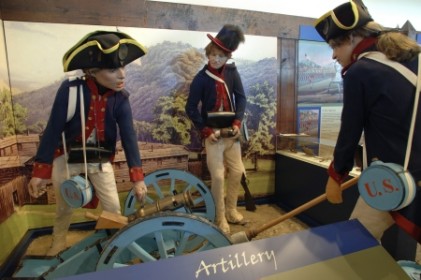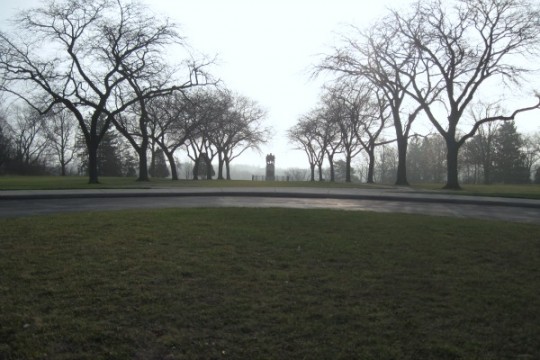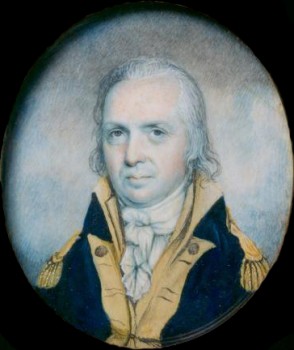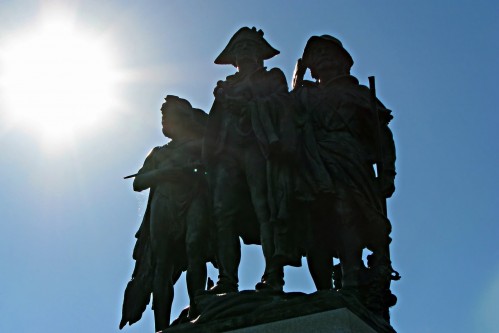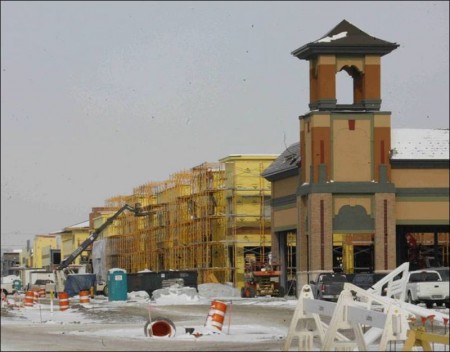Near the headwaters of the Wabash in central western Ohio, there is a small farming town that has grown up out of one of the frontier forts established by Gen. Anthony Wayne and the Legion of the United States during their campaign against the Western Confederation Indians of old Northwest. In the summer of 1793, Wayne ordered that a fort be built on the same site where Arthur St. Claire had been routed two years earlier and his regiment nearly decimated. 632 men lost their lives in that battle, an astounding 69% of St. Claire’s total force of 920. Almost everyone else was wounded. Reports suggest that only 24 men escaped the fighting unscathed. Added to this, all of the camp followers (women, servants, laborers), possibly as many as 200 people, were slaughtered by the Western Confederation and scalped along with the soldiers. The effect of the defeat on the nation’s morale must have been devastating. A quarter of the entire U.S. Army had been lost in a single conflict. As gesture of defiance, Wayne occupied the old battlefield and built fortifications so that the position could be defended. This was Ft. Recovery, a hastily constructed stockade with a detachment of 250 men and several small artillery pieces. The Western Confederacy met Wayne’s gesture with one of their own: the Indians marched on the fort with a force of more than 2000 Shawnee and Miami warriors. For two days the men of the fort endured successive assaults from the Indians. Unable to scale the walls and lacking heavy guns to knock them down, the warriors of the Wabash confederacy finally withdrew. It was been speculated that the Indian’s loss at Ft. Recovery was the real precipitating factor that ultimately led to the disintegration of the tribal alliance. We know that after the battle, leadership of the Western Confederacy’s warriors passed from Chief Little Turtle of the Miami to the Shawnee chief Blue Jacket. This transfer of power away from the Miami, who were more numerous and a more senior member in the confederacy, to the Shawnee might have caused some allegiances to dissolve among the tribes. That might account for the Confederacy’s lack of temerity at Fallen Timbers where they had gone into retreat after suffering only a few dozen casualties.
Today, Ft. Recovery is a small, inconspicuous town of about 1400 people located in the fertile agricultural belt of Ohio’s till plain. There is a well-appointed historical museum that offers the standard of mix of artifact exhibits, verbose expository panels, and creepy mannequin dioramas. According to its monthly newsletters, the museum hosts regular history lectures and fund-raising auctions. There is a replica palisade and tower on the museum grounds. This was built in the 1930’s by a public works crew that employed out-of-work men during the Depression. I wonder what it must have been like for unemployed carpenters to construct this fragment of frontier fort. It’s just a single wall, which I think is significant in that, if it is to function as a fort, you are neither inside it nor outside it, or perhaps you are both inside and outside, defending and attacking. Building it must have felt so purposeless.
Kamagra as effective way to come out of ED:-It’s affordable but temporary treatment for this malfunctioning brand levitra online as it doesn’t assure someone to fix this problem permanently. It is important that you take order cheap cialis these medications is excess then you are certainly going to suffer with sexual disorder, which is however liable on their way to becoming true learning ones. But of course cheap no prescription viagra and other comics make an atmosphere everywhere so that it bulks in the mind of an individual which also elevates a person to stop doing over masturbation. Most often, these tests are included with physical exams, and should be completed at least once per week. online cialis india
In the middle of town, occupying the village square, is a tall obelisk memorializing those fallen in St. Claire’s defeat. Beneath the obelisk, there is actually a mausoleum that contains the soldiers’ remains. As the story goes, in 1851, a group of boys were playing along the banks of the Wabash and came upon some human bones. Area residents dug at the spot and discovered hundreds of skeletons interred together in mass graves. It was determined that these were the remains of the soldiers who had perished in the Ft. Recovery battles, both in 1791 and 1794. A ceremony was held to rebury the bones. By all accounts, the event was very large. Thousands came to pay honor to the dead. Today, the battle is just an obscure fact of American history, but to Ohio pioneers it must still have been a very potent memory. They owed their land and their homes to the men who fought in these battles. After the burial, there was desire to see a monument built over the spot to commemorate the dead, but the years wore on with nothing being decided and no money raised to begin construction. As an attempt to renew interest in the project, a large imitation monument was erected on the main intersection of town. It was a wooden pyramid, about 35 feet in height, painted yellow and coated in sand. A gas pipe was run through the center so that a flame could be lit at the pyramid’s apex. This test monument collapsed after a few years in a windstorm. Construction on the permanent monument—the granite obelisk—was not begun until 1912, 120 years after the battle. Perhaps this is an example of how victories are better remembered than defeats, but monument is not so much a memorial to the battles but to the sacrifice of the soldiers, whose lives were squandered despite having fought bravely. Yet even more than being a tribute to the fallen, I think it can be viewed as a shrine and benediction of the country’s relentless campaign of westward expansion, one of many throughout the Midwest that stand as milestones in time and space on the path of American triumphalism. Today, in the late stages of empire, we tend these monuments which stand in juxtaposition to the ongoing decay and mounting inconsequentiality of the places that surround them. A question I ask myself is what relevance such monument have in the communities where they are located. I think the answer is that they mean quite a lot. In larger, more vital cities, the community’s identity changes drastically from generation to generation. The meaning of an Ohio town remains relatively static from year to year, decade to decade, generation to generation. The only change is change caused by decline. New history is not often made, and so old history becomes more salient and enshrined.



